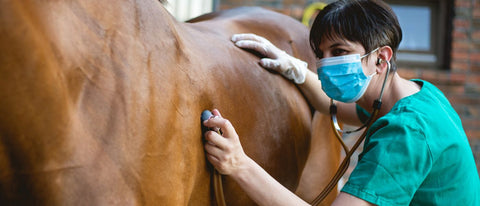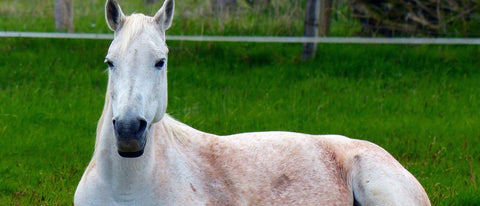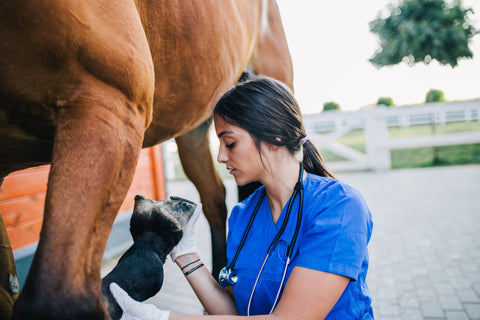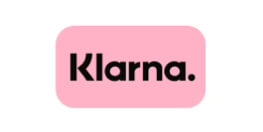
Florian ist aufgewachsen auf einem Bauernhof. Umgeben von Pferden, entdeckte er früh seine Faszination für diese majestätischen Tiere. Inspiriert von seiner reitbegeisterten Mutter, entwickelte er das Nahrungsergänzungmittel - Pferdegold. Seine tiefe Verbundenheit zur Natur und die leidenschaftliche Hingabe zu Pferden trieben ihn an, sein Unternehmen zu gründen.
Do you love the feeling of riding a horse and enjoying nature? Now you want to take on more responsibility and buy your own horse. But how much does a horse actually cost? The price of the animal depends on many factors, such as breed, age, training standard, lineage, and even health.
It's therefore impossible to generalize how much a horse costs. Nevertheless, we would like to give you an insight into the most important cost items.

Buying a horse: What costs should you expect?
If you want to calculate the costs of owning a horse , you need to consider more than just the purchase price . How expensive a horse is depends on countless factors. For example,
- whether the animal has already been broken in,
- what breed it is,
- what specific ancestry the horse has and much more.
Aside from the one-time purchase, basic equipment for the animal is also required. This includes all important care products such as grooming equipment, a first-aid kit, and everything for daily use such as halters and ropes, as well as equipment necessary for training such as saddles, bridles, and boots.
- stable rent,
- travel costs,
- Vet,
- farrier,
- Dentist,
- possible riding lessons,
- tournament fees,
- Costs for courses,
- Insurance and much more.
What are the one-off costs associated with a horse?
Certain costs for your horse only occur once.
This includes:
🐎 the purchase costs for the animal
🐎 the transport costs
🐎 the costs for the purchase examination
🐎 and the costs for basic equipment
We will go through these points in more detail for you below.
Purchase costs: The first step to owning your own horse
It's impossible to put a blanket figure on how much a horse costs to buy . A small pony can be purchased for just a few hundred euros, whereas there are horses in the world worth several million euros. It all depends on the specific animal.
Relevant factors include:
- Horse species
- race
- Old
- Level of education
- Ancestry
- Health
Below is a small overview that visualizes at least some of these factors.

Pferdegold® supplementary feed!
Pferdegold is a small family business from Bavaria with a big dream: to produce the best horse feed. We see ourselves as a family of equestrians who want to provide your horse with the ideal nutrition. 100% natural and perfectly tailored to your horse's needs.
Try it now!
How much does a pony cost?
According to ARAG Animal Insurance, a riding pony foal costs approximately €1,500 and up . For an Icelandic pony, prices start at €2,000 . A Shetland pony foal, on the other hand, can be purchased for as little as €200 .
How much does a Haflinger/Norwegian cost?
For a Haflinger/Norwegian foal , you can also expect to pay upwards of €1,500 . Well-trained horses of this breed can be purchased starting at around €3,500 .
How much does a warmblood cost?
Foal prices for warmbloods start at around €2,000 . For a three-year-old warmblood that has n't yet been trained , you should budget €5,000 and up .
However, if you want to buy a well-trained warmblood that is already broken in and intended for competition, you should expect to pay €10,000 or more .
Transport costs and costs for the purchase inspection
When buying a horse, a veterinary pre-purchase examination (also known as a pre-purchase veterinary examination) is very important, but it also incurs costs. This so-called "horse MOT" addresses any pre-existing health problems the animal may have.
This can significantly impact the purchase price. Depending on the scope of the inspection, you should budget between €100 and €1,500 , according to Allianz .
Also, keep in mind that you'll have to transport the animal to the desired stable once you've purchased it. You may already have a trailer and the appropriate license for it, but you may also need to factor in the cost of purchasing or renting one.
You can tow a trailer with a standard Class B driver's license , but you, the vehicle, the trailer, and the horse together must not weigh more than 3,500 kilograms . With a heavy warmblood in the trailer, that might be tight, and even more so with two horses.
For up to 4,250 kilos, you can have the key number 96 registered or take a test for the BE driving license class directly.

Costs for basic equipment: What do you need?
Another cost factor, which also varies greatly, is the basic equipment for the horse . Whether it's a dog, cat, fish, or horse – animals need a lot of things to be properly cared for.
For horses, the list is correspondingly long and includes, for example:
- saddle
- saddle pad
- saddle girth
- Cleaning utensils
- lunge
- holster
- Knit
- Bridle
- Stable pharmacy
- gaiters
- Ceiling
If it's a good saddle , it can cost up to €5,000 – plus a host of accessories. The cost of a saddler must also be factored in, and even a simple bridle costs an average of €200 to €300 .
While prices always vary depending on the material used and the manufacturer, the cost of basic horse equipment should not be underestimated . Plan on spending approximately €500 to €3,000 or more, depending on quality, scope, and brand.

Pferdegold® supplementary feed!
Pferdegold is a small family business from Bavaria with a big dream: to produce the best horse feed. We see ourselves as a family of equestrians who want to provide your horse with the ideal nutrition. 100% natural and perfectly tailored to your horse's needs.
Try it now!
Running costs: How much does it cost to keep a horse?
In addition to the one-time costs , ongoing costs must also be taken into account , such as the price of horse boxes or costs for veterinary care, feed and more.
Stable rent or accommodation costs
Of course, you also have to factor in the costs of horse care . Depending on the region and boarding facility, the prices for horse stalls and stable rent in general vary considerably.
If you want to board your horse and calculate the costs, it starts at around €200 , depending on the provider . However, more space also means more costs, and the costs also increase near a larger city.
However, you shouldn't just focus on money when it comes to this point. Of course, the monthly cost of the stable is an important factor, but the most important thing is that your animal feels comfortable .
Also note that there are differences depending on whether you care for your horse yourself at the stable or whether your animal is cared for there. This can easily double the price.
Another important factor is whether you receive support from a professional trainer. This is especially important if you want to improve.
Feed costs: hay, straw, concentrates and supplements
Feeding horses is a completely individual matter . The animal's weight plays a major role, as does whether it's a training or leisure horse .
- Gender,
- Age,
- health
- and other factors must also be taken into account when taking care of the food.
The basis of a horse's diet is hay , which is rich in fiber. Straw, on the other hand, is mainly used as bedding, but can also be eaten (especially wheat straw). Because it has fewer nutrients than hay, it is usually used only as a supplement to extend chewing time.
For higher energy needs, concentrated feed is an important supplement, such as oats, pellets, or muesli mixes . You should also budget for a good mineral feed , other supplemental feed , and the occasional treat like apples and carrots . The monthly costs will then be approximately €100 to €300 , depending on the individual situation.
Our product recommendation
Veterinary costs: routine examinations, vaccinations, dental treatments
The veterinarian won't just examine your animal when it's sick—also consider the routine examinations you, as a horse owner, will need. A veterinarian should examine your horse's health at least once a year so that problems or illnesses can be detected early . You can budget around €100 to €200 per examination , although the exact cost depends on the region and the veterinarian.
In addition, there are vaccinations for your horse, such as tetanus and influenza . You'll usually pay around €100 to €150 for such a combination vaccination. Keep in mind that influenza and tetanus are mandatory vaccinations for horses, so you should definitely budget for these costs regularly. In addition, there are deworming treatments and dental treatments to maintain the teeth.
Veterinary costs are best calculated on an annual basis and range roughly from €400 to €1,000 . Of course, additional costs will arise in emergencies and other situations, so it's always best to have a certain financial buffer.
Additional costs: essential expenses for horse owners
When considering your horse's regular costs, also consider monthly insurance premiums and your animal's hooves.
Hoof care and shoeing
A farrier visits horses approximately every six to eight weeks . Here, too, the cost of shoeing varies considerably. Your horse may also be barefoot, requiring different care.
🐎 For cutting you pay about 30 to 50 euros,
🐎 whereas a shoe fitting costs around 80 to 150 euros.
🐎 Special shoes for all hooves can also cost around 200 euros.
Insurance: liability, surgical and health insurance
There is no such thing as mandatory horse liability insurance . This means that theoretically you don't need to insure anything at all – although that wouldn't be advisable. The most important thing is horse liability insurance, which is
- all property damage,
- Financial losses
- and personal injuries caused by your horse.
The insurance also provides you with passive legal protection in the event of an unlawful claim that results in legal action. You pay between €50 and €300 per year for this, by far the most important, insurance.
In addition, you have the option of taking out the following insurance policies:
-
Health insurance (covers examinations, medications, etc., depending on the insurance, but not operations)
-
Surgical insurance (covers the animal's operations depending on the insurance)
-
Life insurance (depending on the type of insurance and tariff, covers accidents, but sometimes also illnesses or injuries)
- Horse transport insurance (cheaper than life insurance, which usually also covers transport)
Unforeseen expenses: what you should definitely plan for
From a financial perspective, anything that affects your horse's health is unforeseen. Veterinary emergencies, for example,
🐎 Colic,
🐎 Injuries,
🐎 acute lameness and more.
Depending on the emergency, you'll need to budget between €200 and €5,000 (or more) – at least without insurance . Surgeries, in particular, can easily reach four-figure costs. Diagnostic tests such as
- Roentgen,
- Ultrasonic,
- Blood or endoscopic tests.
However, your horse may also need physiotherapy or rehabilitation, for example after an operation or an injury. There are also other
- hoof care,
- special fittings,
- additional supplementary feed,
- Medicines,
- Saddle adjustments,
- dental problems,
- jaw treatments,
- additional transport costs
- or just new equipment.
Unforeseen doesn't necessarily mean that it's unpredictable and therefore difficult to calculate financially. This is comparable to the situation with a house, where owners also need to be financially prepared for the unexpected, at least in terms of their bank account.
How much does a horse cost per month?
Since the costs for the stable , veterinarian , and food vary so widely , it's almost impossible to specify a flat monthly amount. The minimum , however, is approximately 350 euros .
However, if the stable costs €500 per month instead of €200, and your animal needs some extra food, you could easily end up with €600 or more . The same applies to veterinary costs, which can be planned for by default, but even with an animal, unplanned expenses do occur from time to time.
The question of how much a horse costs per month can therefore only be answered very roughly . When making your own calculations, make sure you consider individual factors, such as how expensive a suitable stable is in your area or what specific feed your horse needs. Then you can estimate the horse's monthly costs (apart from the vet) relatively accurately.
Cost & approximate costs per month
- Stable rent: from 200 euros upwards (individually depending on region, box size and service)
-
Food: approximately 100 to 300 euros (very individual depending on the horse)
-
Vet: approximately 400 to 1,000 euros per year, or approximately 33.33 to 83.33 euros per month (plus additional unexpected veterinary costs)
-
Hoof care / horseshoeing: approximately 30 to 150 euros every six to eight weeks, i.e. approximately 15 to 75 euros per month
- Insurance: for liability insurance around 50 to 300 euros per year, i.e. approximately 4.67 to 25 euros per month (plus further insurance costs for, for example, surgical insurance or life insurance)
In addition, there are costs for tournaments, travel, possible medication, physiotherapy and more – all of this, however, can only be calculated individually and depending on the situation and animal.
A fairly common practice for horse owners is to set aside an additional €100 per month in addition to the running costs. This amount adds up annually, so you would save an additional €1,200 annually.
Conclusion
There are a lot of things to consider when it comes to the cost of a horse. On the one hand, there are one-time costs, such as the initial purchase of the animal, transport, the initial examination, and basic equipment. In addition, monthly costs play a significant role, especially in the long term.
Also consider unforeseen costs, such as more frequent veterinary visits, special horseshoes, special feed, or even additional services like additional training. If you plan to compete with your horse in competitions, you'll also face additional costs for transport, fees, possibly different or more feed, prior veterinary examinations, and more.
FAQ
How much does a horse share cost?
If owning your own horse isn't financially viable yet, a horse-sharing partnership is a good alternative. The costs are typically around €50 to €100 per month. However, the contract must stipulate how often and when you will care for the animal, as well as what responsibilities you will generally assume in the partnership.
How much does liability insurance for a horse cost?
Liability insurance is essential for horse owners to be able to cover financial losses, property damage, and personal injury. This insurance costs a relatively low monthly fee. Annual costs are usually less than €100, although the exact amount depends on factors such as the number of horses insured and the type of horse.
How much does the most expensive horse in the world cost?
At least according to Statista, the thoroughbred racehorse Fusaichi Pegasus is considered the most expensive horse in the world. During its "career," the horse won $1.9 million in prize money. It was born in 1997 and lived to be 26 years old. The animal's selling price at the time was $64 million. The runner-up is the English thoroughbred Big Brown, at $60 million.
Important:
Pferdegold is not a substitute for veterinary diagnosis or treatment. The information contained in this article is for general informational purposes only and is intended to help improve your horse's well-being.
Pferdegold products do not treat or cure diseases , but rather support your horse in compensating for nutritional deficiencies through targeted nutrient intake .
However, they are not a substitute for professional advice from a veterinarian or specialist. If your horse has any health problems, we strongly recommend consulting a veterinarian. Pferdegold assumes no liability for decisions made based on the information provided here.
🐎 Learn more about horse breeds:

















